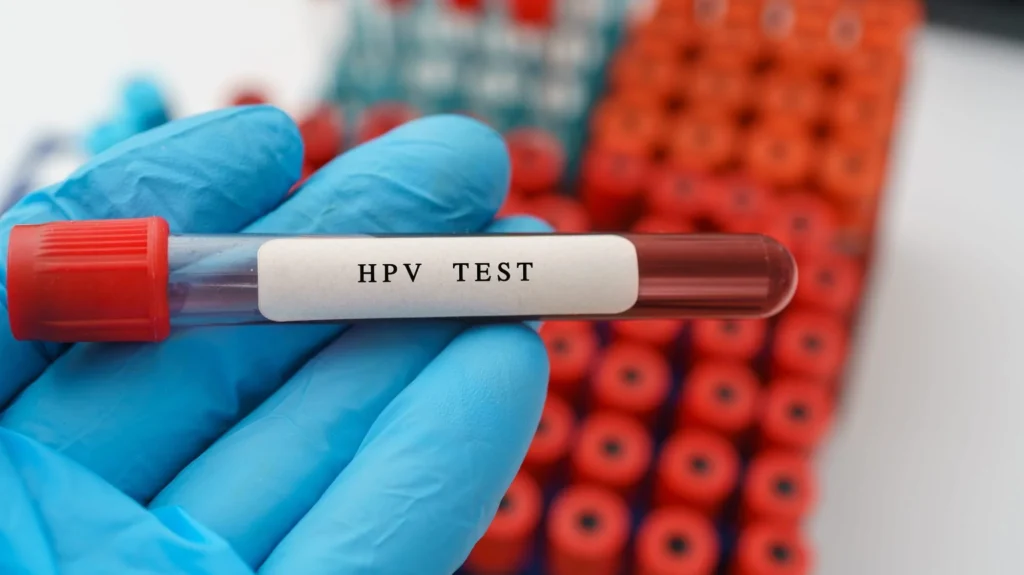Human Papillomavirus (HPV) is one of the most common sexually transmitted infections globally. While many people with HPV never experience symptoms, some strains of the virus can lead to serious health problems, including genital warts and even cervical cancer. In this comprehensive guide, we will explore the importance of the HPV test, how it works, why it’s crucial for your health, and how to access testing.
What is HPV and Why is Testing Important?
HPV is a group of more than 200 related viruses, with about 40 types that affect the genital area. The majority of HPV infections are harmless and may not cause any noticeable symptoms. However, certain high-risk strains, such as HPV 16 and HPV 18, are associated with various cancers, including cervical, anal, and throat cancers. The HPV test is vital in detecting the presence of these high-risk strains, especially in individuals who may not exhibit any symptoms.
HPV infections can often go undetected, as the body may clear the virus naturally over time. Unfortunately, in some cases, the virus can persist and lead to cell changes that may develop into cancer. Regular testing allows for early detection, which can significantly reduce the risk of these serious health conditions. In particular, the HPV test plays a crucial role in preventing cervical cancer, which is one of the most common cancers in women worldwide.
How Does the HPV Test Work?
The HPV test is a simple procedure that checks for the presence of high-risk HPV strains in the body. It can be performed alongside a Pap smear (a test that checks for abnormal cervical cells) or as a standalone test. Both men and women can undergo HPV testing, but it is most commonly recommended for women, as they are at higher risk of developing HPV-related cancers, particularly cervical cancer.
1. The Process of HPV Testing for Women
For women, the HPV test typically involves collecting a sample of cells from the cervix during a pelvic exam. This is done using a small brush or swab to gather cells from the cervix. The sample is then sent to a laboratory for analysis. If the test detects high-risk HPV types, further monitoring or treatment may be recommended. In some cases, additional testing such as a colposcopy (a procedure to closely examine the cervix) may be performed.
The HPV test for women is usually recommended for those over the age of 30, as the risk of HPV-related cervical cancer increases with age. It may also be recommended for younger women who have abnormal Pap smear results. Early detection through the HPV test can allow healthcare providers to take preventive measures and avoid the progression of abnormal cells into cancer.
2. HPV Testing for Men
HPV testing is less commonly performed for men, as the virus often clears up on its own without causing health problems. However, for men who are at higher risk of developing HPV-related cancers—such as those who have sex with men or are HIV positive—HPV testing may be advised. The test for men typically involves a visual inspection of genital warts or the collection of samples from the throat, anus, or penis, depending on the type of cancer risk.
Although HPV testing in men is not as widespread as in women, it is becoming more common due to increasing awareness of HPV-related cancers in men, such as penile, anal, and throat cancer. Regular screenings can help prevent these cancers by detecting high-risk strains early.
Why You Should Get Tested for HPV
Getting tested for HPV is essential for several reasons. While many HPV infections resolve on their own, persistent infections with high-risk strains can lead to severe complications. Early detection through regular testing can help prevent these outcomes by allowing for timely intervention.
1. Preventing Cervical Cancer
Cervical cancer is primarily caused by persistent infection with high-risk strains of HPV. Regular HPV testing can identify infections early, long before cancer develops. In some cases, abnormal cell changes can be detected, and treatment can be initiated to prevent the progression to cancer. This is why many health organizations recommend HPV testing as part of routine screenings for women.
2. Monitoring High-Risk HPV Strains
Certain strains of HPV, such as HPV 16 and HPV 18, are known to be more likely to cause cancer. By identifying these high-risk strains early, healthcare providers can take necessary precautions, such as monitoring changes in the cervix or offering preventive treatments. In some cases, additional testing and follow-up procedures may be required.
3. Reducing the Spread of HPV
HPV is highly contagious, and individuals who are infected may unknowingly spread the virus to others. By getting tested, you can take the necessary steps to reduce transmission. If you are diagnosed with HPV, informing your sexual partners can help prevent the spread of the virus and allow them to get tested as well.
How to Get an HPV Test: Options Available
If you’re considering getting an HPV test, you have several options. You can undergo testing at a healthcare clinic, doctor’s office, or even at home. Home testing kits have become increasingly popular, offering a convenient and private way to check for HPV without visiting a healthcare provider. These kits typically involve collecting a sample from your genital area, which you then send to a lab for analysis.
1. Clinic or Doctor’s Office Testing
Traditional HPV testing is usually performed at a healthcare facility. The procedure typically takes only a few minutes and may be combined with a routine pelvic exam. The advantage of testing at a clinic is that you have immediate access to medical professionals who can offer advice and guidance based on your results. Additionally, healthcare providers can recommend follow-up testing or treatments if needed.
2. Home HPV Test Kits
For those seeking privacy and convenience, home HPV test kits are an excellent option. These kits allow you to collect a sample from the comfort of your home and send it to a laboratory for analysis. Home tests typically require a vaginal swab for women or an anal swab for men. Results are usually available within a few days to a few weeks.
One reputable source for purchasing home HPV test kits is Medicines Online, which offers easy-to-use kits designed to check for a variety of HPV strains. The ability to test at home can be a game-changer for many individuals, providing a convenient, discreet method of screening for HPV.
What Happens After an HPV Test?
Once you’ve completed the HPV test, the next step is understanding the results. If the test is negative, it means you don’t have high-risk strains of HPV, and no further action is necessary. However, if the test is positive, it may indicate that you have a high-risk HPV infection. This doesn’t necessarily mean that you have cancer, but it’s an indication that you may need further testing or monitoring.
If high-risk HPV is detected, follow-up procedures may include a Pap smear or a colposcopy to check for abnormal cells on the cervix. In some cases, additional treatments may be recommended to remove abnormal cells and prevent the development of cervical cancer. For men, further testing may involve checking for anal, penile, or throat cancer.
Conclusion: Protect Your Health with Regular HPV Testing
HPV testing is a crucial tool in preventing HPV-related cancers and maintaining overall health. Whether you’re a woman or a man, regular HPV testing is essential for early detection and intervention. By staying proactive and getting tested, you can reduce your risk of cancer and protect both your health and the health of your sexual partners.
If you’re ready to take the next step in protecting your health, consider using a reliable HPV test kit to check for HPV from the comfort of your home. Whether you choose to get tested at a healthcare clinic or opt for the privacy of home testing, it’s vital to make HPV screening a regular part of your health routine. By doing so, you can catch any potential issues early and enjoy peace of mind knowing you’re doing everything you can to safeguard your health.




















